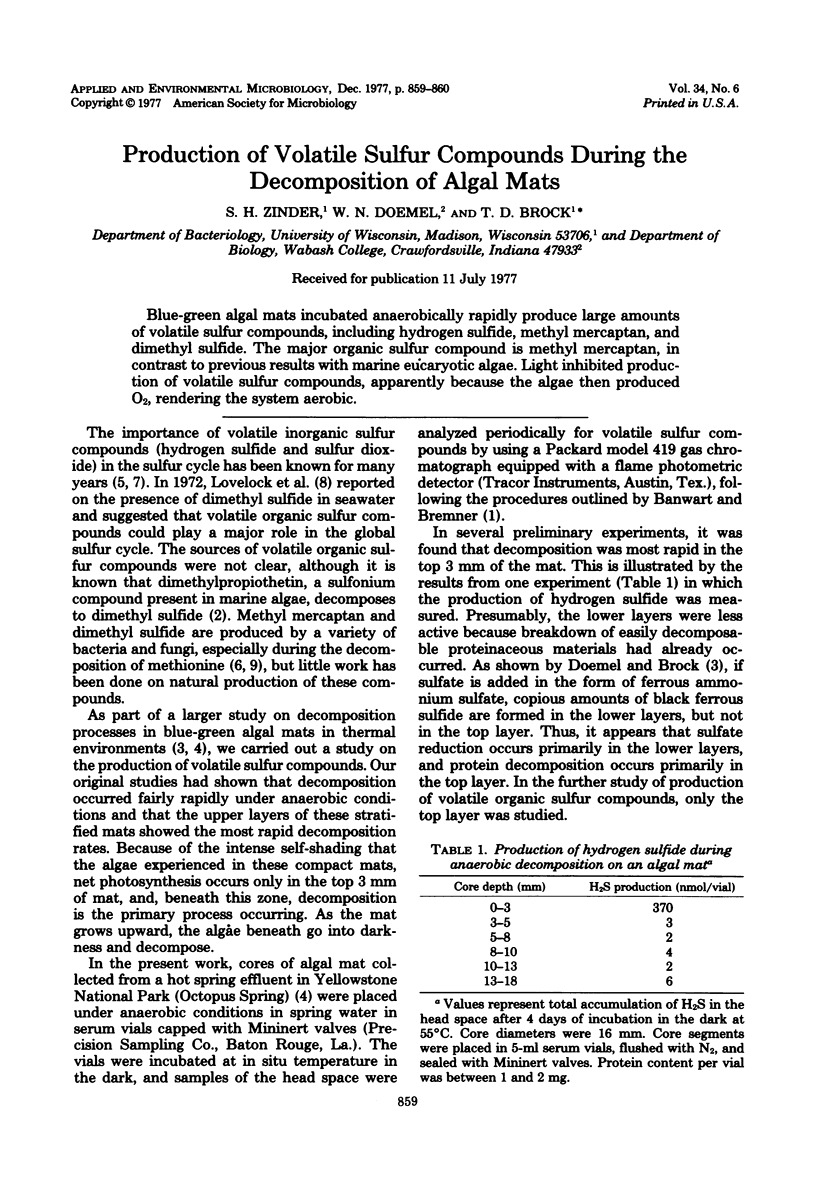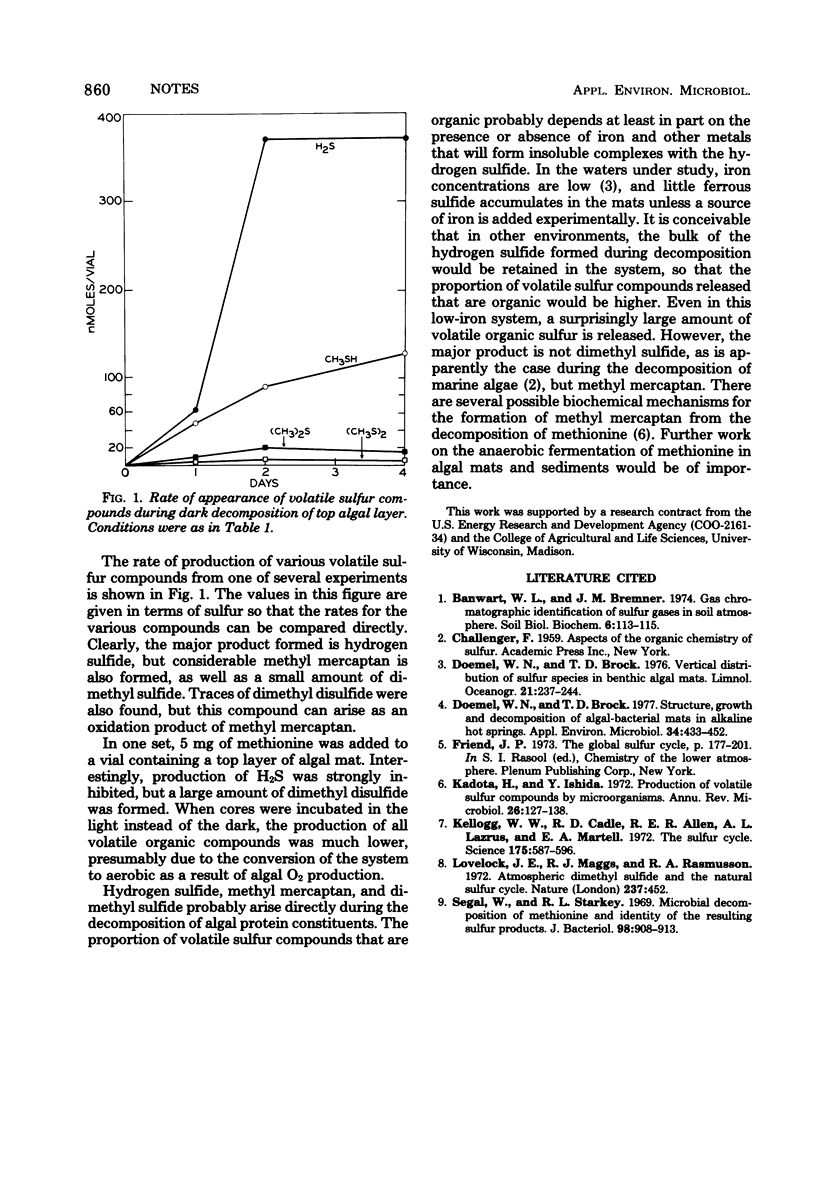Abstract
Blue-green algal mats incubated anaerobically rapidly produce large amounts of volatile sulfur compounds, including hydrogen sulfide, methyl mercaptan, and dimethyl sulfide. The major organic sulfur compound is methyl mercaptan, in contrast to previous results with marine eucaryotic algae. Light inhibited production of volatile sulfur compounds, apparently because the algae then produced O2, rendering the system aerobic.
Full text
PDF

Selected References
These references are in PubMed. This may not be the complete list of references from this article.
- Doemel W. N., Brock T. D. Structure, growth, and decomposition of laminated algal-bacterial mats in alkaline hot springs. Appl Environ Microbiol. 1977 Oct;34(4):433–452. doi: 10.1128/aem.34.4.433-452.1977. [DOI] [PMC free article] [PubMed] [Google Scholar]
- Kadota H., Ishida Y. Production of volatile sulfur compounds by microorganisms. Annu Rev Microbiol. 1972;26:127–138. doi: 10.1146/annurev.mi.26.100172.001015. [DOI] [PubMed] [Google Scholar]
- Kellogg W. W., Cadle R. D., Allen E. R., Lazrus A. L., Martell E. A. The sulfur cycle. Science. 1972 Feb 11;175(4022):587–596. doi: 10.1126/science.175.4022.587. [DOI] [PubMed] [Google Scholar]
- Segal W., Starkey R. L. Microbial decomposition of methionine and identity of the resulting sulfur products. J Bacteriol. 1969 Jun;98(3):908–913. doi: 10.1128/jb.98.3.908-913.1969. [DOI] [PMC free article] [PubMed] [Google Scholar]


